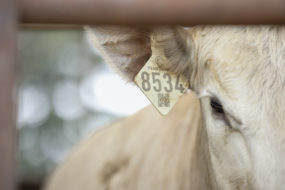Many beef cattle producers graze winter annuals, but are they utilized in the most optimal way? Instead of unrestricted access to forage, limit grazing is a strategy which can be used to help provide short-term access to a high-quality forage crop and extend the use of other conserved forage resources being used on the farm. For example, think about limited access in a way that the high-quality forage becomes a supplement to the hay you are feeding. Limit grazing may be used to maximize forage use efficiency in this system, reduce trampling and waste of winter annuals, and provide access to early growth of cool-season forages.
Winter annuals typically contain 70% to 75% total digestible nutrients (TDN) and in excess of 15% crude protein. This makes an excellent supplement to hay because the energy in the winter annuals is in the form of digestible fiber, which does not reduce hay digestion. In addition, the protein fraction is highly digestible. For much of the hay produced in the Southeast, providing cows with 5 to 7 pounds of supplemental dry matter from these winter annuals would provide adequate nutrition for a lactating cow.
Once 6 to 8 inches of standing forage has accumulated, we are ready to start utilizing it. A period of about one-and-a-half to two hours of grazing per day is sufficient time for the cows to meet their needs. A good rule of thumb would be to remove the cows from grazing as soon as the first cow starts looking for a place to lie down. Furthermore, this does not have to be a daily routine; similar results can be achieved with every-other-day access to the grazing. The time period may need to be slightly extended with this option.
In the beginning, it may take some time to get the cows on and off of the winter annuals, but in just a few days it will become a more routine procedure, and the cows will meet you at the gate both coming and going. Establishing winter annuals can be costly and is quite weather-dependent; however, the nutrition is excellent and the requirement for mechanized daily feeding is all but eliminated. The key to success is using limit grazing rather than allowing cows continual access to winter annuals. Keeping winter annuals grazed down to the ground is not conducive to maximum production. If ideal growing conditions exist and forage production is exceeding animal demands, then by all means utilize more of the forage.







